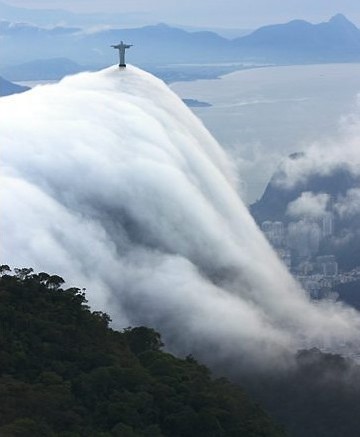Today, first of March, the city of Rio de Janeiro is making 448 years. Happy birthday, Rio.
Rio de Janeiro, commonly referred to simply as Rio, is the capital city of the State of Rio de Janeiro, the second largest city of Brazil, and the third largest metropolitan area and agglomeration in South America, boasting approximately 6.3 million people within the city proper, making it the 6th largest in the Americas, and 26th in the world. Rio de Janeiro has become a home of a World Heritage Site named “Rio de Janeiro: Carioca Landscapes between the Mountain and the Sea”, as granted by UNESCO on 1 July 2012 in the category Cultural Landscape. Residents of the city are known as “cariocas”.
Rio de Janeiro is the most visited city in the southern hemisphere and is known for its natural settings, carnival celebrations, samba, Bossa Nova, balneario beaches such as Barra da Tijuca, Copacabana, Ipanema, and Leblon. Some of the most famous landmarks in addition to the beaches include the giant statue of Christ the Redeemer (“Cristo Redentor”) atop Corcovado mountain, named one of the New Seven Wonders of the World; Sugarloaf mountain (Pão de Açúcar) with its cable car; the Sambódromo, a permanent grandstand-lined parade avenue which is used during Carnival; and Maracanã Stadium, one of the world’s largest football stadiums. The 2016 Summer Olympics and the Paralympics will take place in Rio de Janeiro, which will mark the first time a South American or a Portuguese-speaking nation hosts the event.
History
Europeans first encountered Guanabara Bay on January 1, 1502 (hence Rio de Janeiro, “January River”), by a Portuguese expedition under explorer Gaspar de Lemos captain of a ship in Pedro Álvares Cabral’s fleet, or under Gonçalo Coelho. Allegedly the Florentine explorer Amerigo Vespucci participated as observer at the invitation of King Manuel I in the same expedition. The region of Rio was inhabited by the Tupi, Puri, Botocudo and Maxakalí peoples.
The city of Rio de Janeiro proper was founded by the Portuguese on March 1, 1565 and was named São Sebastião do Rio de Janeiro, in honor of St. Sebastian, the saint who was the namesake and patron of the then Portuguese Monarch D. Sebastião.
When Prince Pedro I proclaimed the independence of Brazil in 1822, he decided to keep Rio de Janeiro as the capital of his new empire. Rio continued as the capital of Brazil after 1889, when the monarchy was replaced by a republic. On April 21 1960 the capital of Brazil was officially moved from Rio de Janeiro to Brasília. Between 1960 and 1975 Rio was a city-state under the name Guanabara State (after the bay it borders). However, for administrative and political reasons, a presidential decree known as “The Fusion” removed the city’s federative status and merged it with the State of Rio de Janeiro, the territory surrounding the city whose capital was Niterói, in 1975.
Visit Rio!

































































































